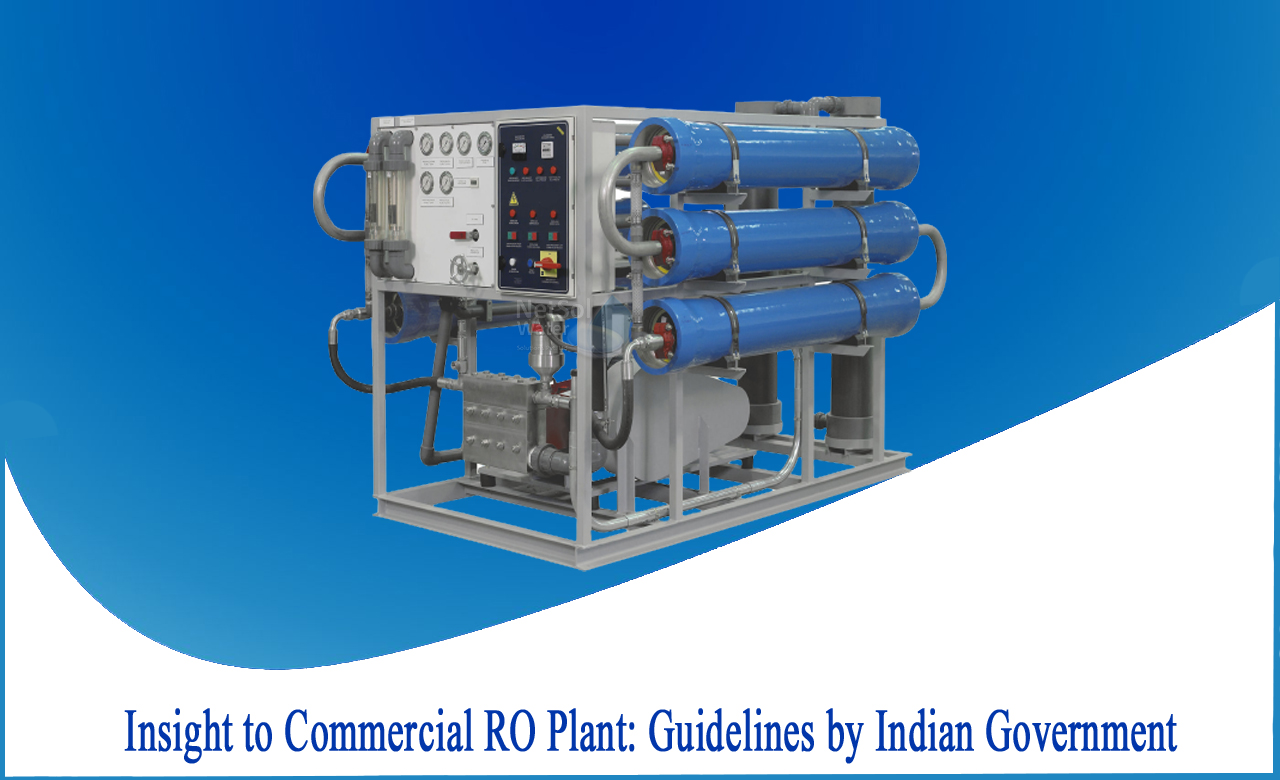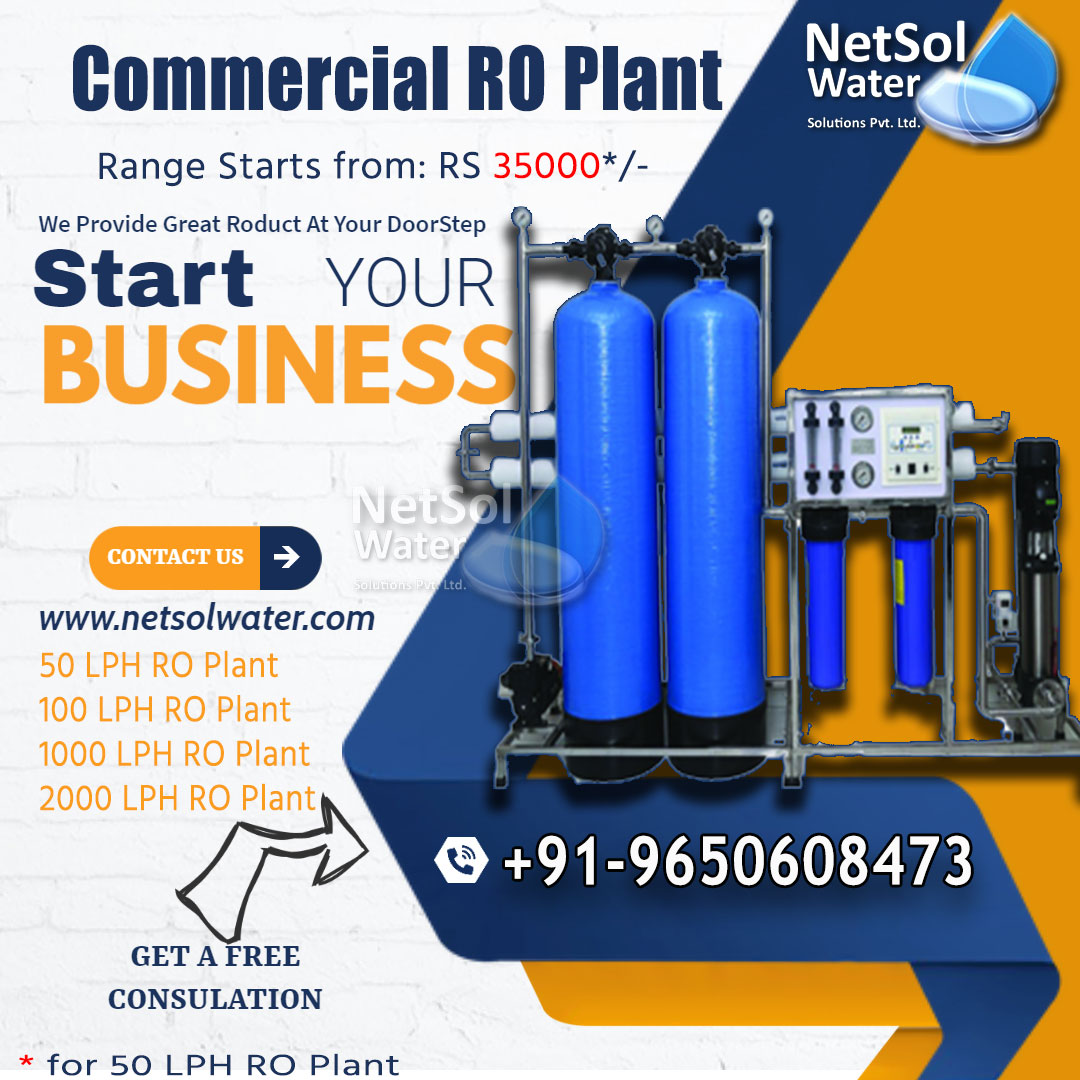What is Commercial RO Plant?
Commercial RO Plant (RO) is a water purification technology that uses a semi-permeable membrane. This membrane technology is not exactly a filtration method. In reverse osmosis, an applied pressure is used to overcome osmotic pressure, a colligative property that is driven by chemical potential which is a thermodynamic parameter. Reverse osmosis through a semi-permeable membrane can remove many types of molecules and ions from solutions, and is used in both industrial processes and the production of potable water.
WORKING OF RO PLANT:
Reverse Osmosis works by using a high pressure pump to increase the pressure on the salt side of the RO and forces the water across the semi-permeable RO membrane, leaving almost all (around 95% to 99%) of dissolved salts behind in the reject stream. The amount of required pressure depends on the salt concentration of the feed water. The more concentrated the feed water, the more pressure is required to overcome the osmotic pressure.
COST ANALYSIS FOR PER LITRE OF TREATED WATER:
Cost per litre of RO treated water is assessed as under. Since normal drinking water acts as feed water for RO system, water extraction cost is excluded in this calculation.
Assuming for 2000 LPH supply RO system
· Cost of unit= approx. Rs. 7,05,000/-
· Electricity Requirement - 6.25KW = 6.25x16 = 100KW (Assuming 16Hrs. working daily. Power consumption by the equipment is taken as provided by manufacturer )
· Electricity charges @Rs.8.36/- per KW for 365 days = 100x365x8.36 = Rs.3,05,140/-
· Labour AMC cost for year - 10,000/-
· Consumables (Assuming normal service requirement) – Rs. 2,15,890/-
· Assuming life of RO system as 5 Years,
· Annual cost of one unit - Rs.1,41,000.00
Total cost involved for a year= Rs. 1,41,000.00 + Rs. 3,05,140.00+ Rs. 10,000.00 + Rs. 2,15,890.00 = Rs. 6,72,030.00
Cost of per litre RO treated water = Rs. 6, 72,030.00/2000*16*365 = Rs. 0.06 per litre.
It can be clearly seen that the process is economically viable and that’s why Indian government started invested in order to relieve from water distress.
NGT'S ORDER PROHIBITING USE OF RO:
It would be relevant to mention here that the National Green Tribunal earlier vide its order dated May 28, 2019, instructed the Ministry to issue notification prohibiting use of RO's in areas where TDS in water was less than 500 milligram/ litre as it was noticed that lesser consumption of TDS in water leads to deficiency of several important minerals in human body. Aggrieved by NGT's impugned order, the Water Quality Association of India i.e. manufacturers of RO purifiers had also approached the Supreme Court, wherein the Apex Court directed the appellants to approach the Ministry and point out to the Ministry, the material appellants have in possession against the ban imposed by NGT prohibiting use of RO water purifiers in such areas. Meanwhile government has come up with regulations to be followed by all the manufacturers’.
According to the new regulation, each water purifier must now have a 'conformance label'--just like a star rating--declaring its efficiency level as well as water rejection and waste levels. In addition, all agencies and organisations involved in water supply are required to inform consumers about the quality of water being provided, as well as the TDS level through advertising and awareness campaigns.




